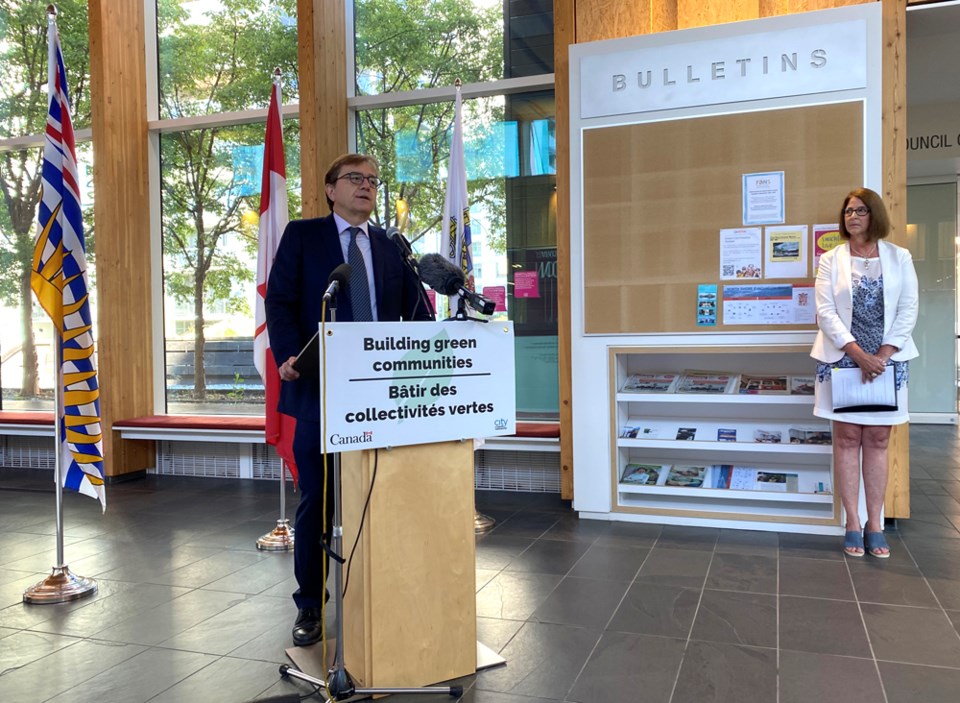The Government of Canada is poised to ramp up efforts to decarbonize the country’s 16.5 million buildings.
Natural Resources Minister Jonathan Wilkinson announced in North Vancouver Wednesday (Aug. 17) the federal government is launching consultations on its $150-million Green Building Strategy, a suite of policy changes aimed at drawing down greenhouse gas emissions from Canada’s homes and businesses.
“When it comes to climate change, I think we can all agree it's no longer a question of whether we should act. It is 'how' we should act to address what is clearly an existential crisis for the world. And the crisis is of particular importance to people of their age,” he said gesturing to a group of youths present for the announcement.
Buildings account for about 13 per cent of the greenhouse gas emissions in Canada (18 per cent if you include the electricity sources they run on), the third highest contributing source behind oil and gas (27 per cent) and transportation (24 per cent).
There are about 16 million dwellings in Canada and more than 482,000 commercial buildings, Natural Resource Canada estimates, 70 per cent of which will still be standing in 2050 when Canada has a commitment to net-zero emissions.
“They're all going to need to be retrofitted and deeply retrofitted if we are to achieve our net-zero goals,” Wilkinson said. “This is no small task but we have already gotten started, and we need to accelerate those efforts going forward.”
The government already offers grants of up to $5,000 for home energy efficiency improvements like the installation of heat pumps, and $40,000 no-interest loans for larger projects. The new Green Building Strategy, which is due to be finalized in 2023, will likely expand on those, Wilkinson said.
As for new buildings, Wilkinson said they will figure heavily in the strategy.
“We do intend to move forward with regulations that will eventually require net-zero building codes. That obviously involves provinces and territories who must implement a national building code,” he said.
Canada’s Green Building Council estimates there will be 1.5 million jobs in the sector by 2030, up from 462,000 today. Wilkinson said the plan includes a strategy already adopted in the Netherlands to standardize retrofits, which should make the business case strong enough for the private sector to join in willingly.
“We are going to need to think about innovative ways to attract private capital to help us to do this. Governments will not have enough money to be able to do all of that on their own,” he said. “It's about creating good local jobs because when you renovate, retrofit and build buildings in your community, the best people to hire are the folks who are already there.”
Comments from the public and industry stakeholders are now being accepted by Natural Resources Canada online.




